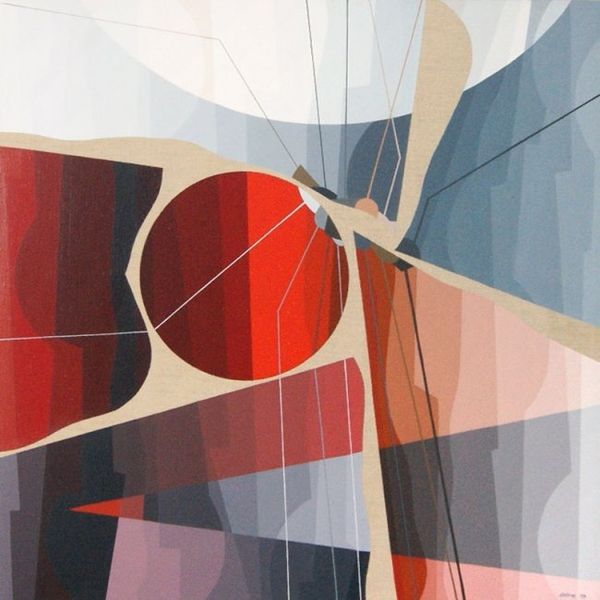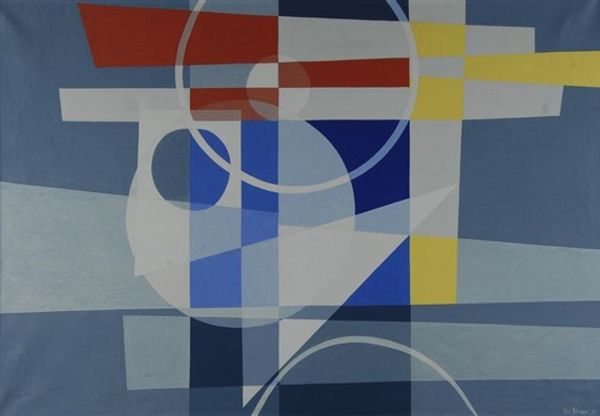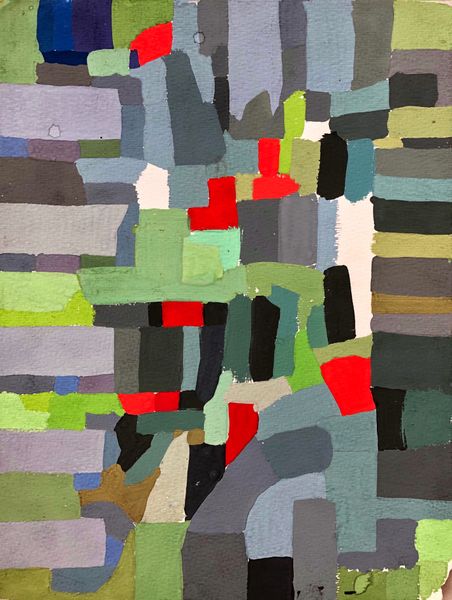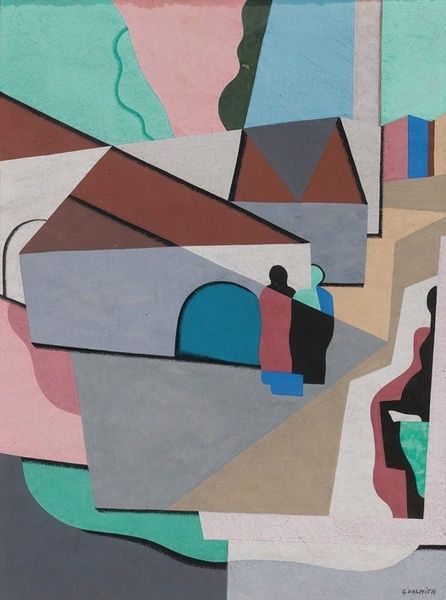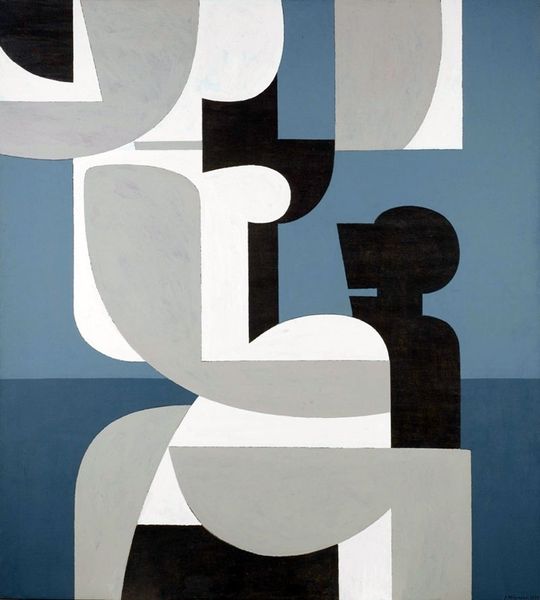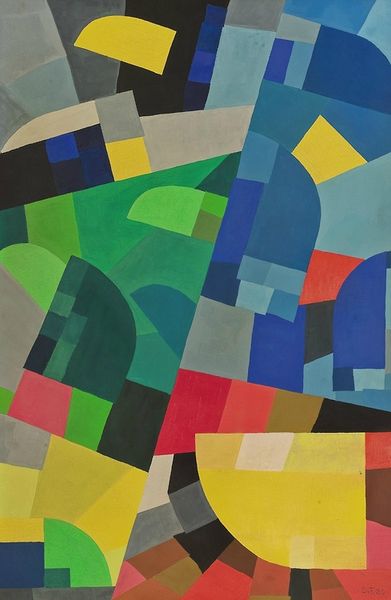
#
pop art-esque
#
popart
#
vector art
#
pop art
#
teenage art
#
mixed mediaart
#
spray can art
#
pop art-influence
#
teen art
#
cartoon style
Copyright: Amedee Ozenfant,Fair Use
Editor: So, here we have "Composition II," painted in 1929 by Amédée Ozenfant. It looks like a still life but almost…abstracted, reduced to geometric shapes. The palette is really restrained, mostly greys and muted colors, and the whole composition feels very formal. What do you make of this arrangement? Curator: Well, consider what a "still life" traditionally represents: a capturing of fleeting beauty, a moment of plenty, reminders of mortality. But here, Ozenfant empties it of almost all those conventional associations. He presents instead, symbols of objects, drained of their immediacy and set in an oddly stark arrangement. Editor: Symbols? What would you say these objects symbolize? Curator: Think about Ozenfant's artistic milieu. This is the Machine Age. What do the clean lines, the near-industrial color palette evoke? Bottles, glasses, even the suggestion of a table are transformed into nearly interchangeable forms. The objects become almost like architectural elements, echoes of a rapidly modernizing world, distilled down into their most basic essence. Editor: So it's not about *those* bottles but *bottle-ness* itself? Curator: Precisely! It asks us to look past the object to the underlying idea, the platonic form if you will. And consider the emptiness around them: is it emptiness, or potential? Is Ozenfant showing us a world stripped bare, or a world full of possibility awaiting redefinition? Editor: That makes so much sense. I see now how the composition itself becomes a symbol, not just what’s depicted. Thank you! Curator: My pleasure. The stripping away of the extraneous forces us to engage directly with form and idea. Food for thought, isn't it?
Comments
No comments
Be the first to comment and join the conversation on the ultimate creative platform.







